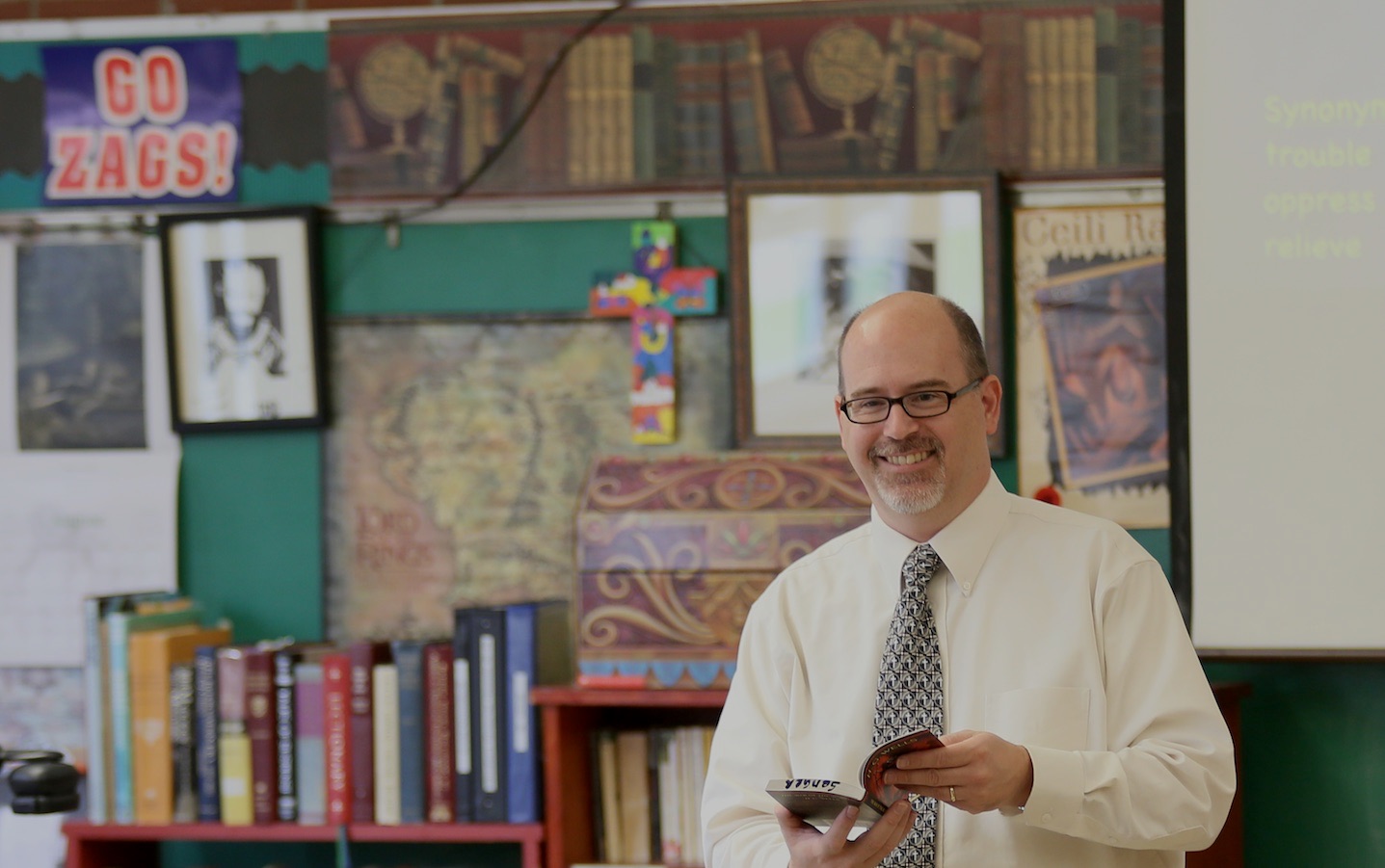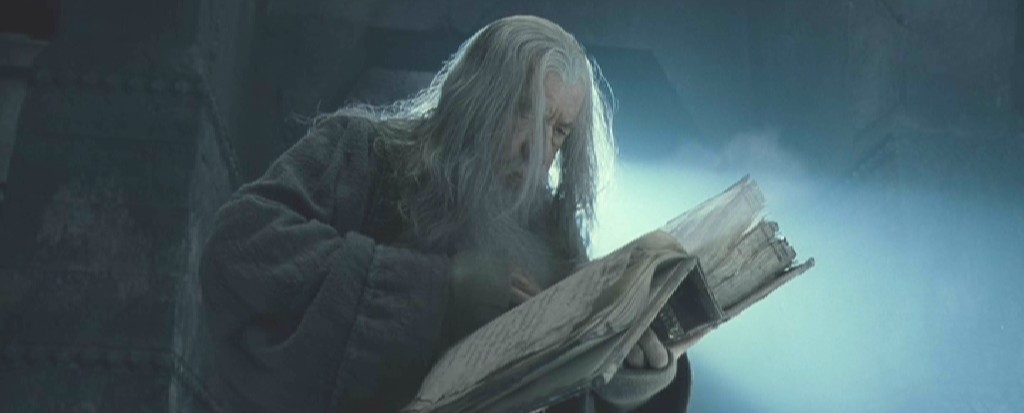 Every hero journey has a mentor; wise teachers like Obi-Wan Kenobi and Dumbledore guide and aid the hero as he or she sets out on a quest of self-discovery and maturity. Your classroom is the proving ground for two dozen or so heroes each year–heroes who are on a journey every bit as important as Frodo’s in The Lord of the Rings. Your students are on a quest to discover their talents and gifts, and to learn how to place them at the service of Christ in order to do their part in bringing about the Kingdom of God. And just as Frodo had Gandalf to guide and mentor him, you are asked to guide and mentor your students. What can we learn from Gandalf’s example?
Every hero journey has a mentor; wise teachers like Obi-Wan Kenobi and Dumbledore guide and aid the hero as he or she sets out on a quest of self-discovery and maturity. Your classroom is the proving ground for two dozen or so heroes each year–heroes who are on a journey every bit as important as Frodo’s in The Lord of the Rings. Your students are on a quest to discover their talents and gifts, and to learn how to place them at the service of Christ in order to do their part in bringing about the Kingdom of God. And just as Frodo had Gandalf to guide and mentor him, you are asked to guide and mentor your students. What can we learn from Gandalf’s example?
1. Visit the library at Minas Tirith – Be a lifelong learner
Gandalf never stopped learning. When he thought the one ring had fallen into Bilbo’s hands, he went to Minas Tirith to study and learn more about the ring’s history. He didn’t assume he knew the answer.
We, too, must be willing to admit the limits of our knowledge, and to be open to learning our whole life long. Our willingness to attend inservices, take classes and read professional articles demonstrates our belief that learning is a lifelong endeavor.
2. Choose the best burglar – Know your students
In The Hobbit, when the dwarves needed a burglar, Gandalf found Bilbo. Gandalf saw something in Bilbo that no one else recognized–not even Bilbo himself. He encouraged Bilbo and drew out of him the abilities that hid beneath the surface of Bilbo’s life.
As teachers, we need to look for latent talents and abilities in our students so we can help them discover things about themselves that they may not be aware of.
3. Leave them standing at the entrance to Mirkwood – Know when to disappear
If Gandalf had accompanied Bilbo or Frodo for the entirety of their quests then they would have been constantly turning to him for leadership and solutions. His disappearance at key moments forced them to depend on themselves. For instance, Gandalf left Bilbo and the dwarves at the outskirts of Mirkwood, claiming he had urgent business in the south. His absence forced Bilbo to “come of age” when he had to battle the spiders in Mirkwood; from that point on, the dwarves learned to look to Bilbo for leadership.
We, too, need to recognize those moments when our students need to fend for themselves, even if it means watching them struggle. Often we swoop in like helicopters, rescuing our students from having to work hard and puzzle through a difficult concept or activity.
4. Face the Balrog – Be there when a problem is beyond students’ abilities
There were times, however, when both Bilbo and Frodo were confronted with challenges that were clearly beyond their abilities. Whether it was the orcs in the Misty Mountains who had captured the dwarves, in The Hobbit, or whether it was the Balrog chasing the Fellowship in The Lord of the Rings, Gandalf knew when it was time to step in and help.
As wise teachers, we must be ready to help students when things are too much for them. There is a line between instructional level and frustration level, and it is a wise teacher who can tell the difference.
5. Refuse the ring – Be humble and let go of ultimate power
Gandalf knew that his will was no match for the ring, so he refused it when Frodo offered it to him, knowing that to take it would mean becoming corrupt.
Classrooms are not kingdoms to be ruled by dictators, no matter how benign we might be. Letting go of the ring of power is one of the healthiest things we can do–both for our students and ourselves.
Conclusion – The Road Goes Ever On
As we accompany our students on their journeys, let us not forget the Teacher who mentors us all–Jesus Christ. May all our days begin and end with the guidance of his Holy Spirit.
The Road goes ever on and on
Down from the door where it began.
Now far ahead the Road has gone,
And I must follow, if I can,
Pursuing it with eager feet,
Until it joins some larger way
Where many paths and errands meet.
And whither then? I cannot say.

